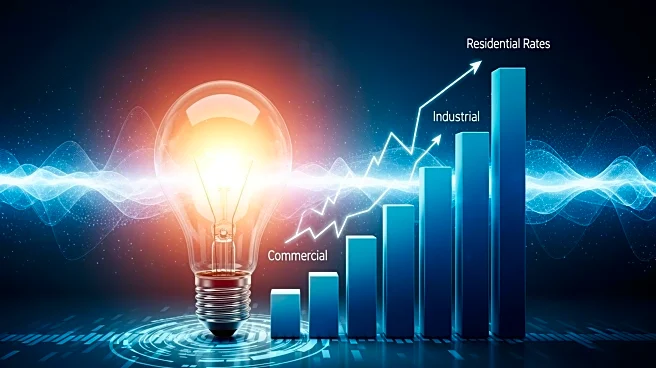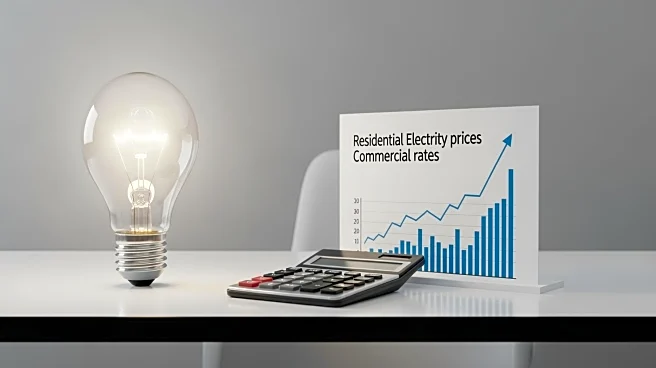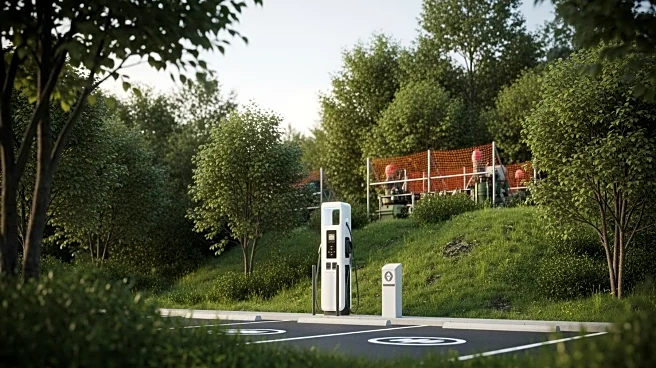What's Happening?
A report from the Lawrence Berkeley National Laboratory reveals that residential electricity prices have increased more rapidly than commercial and industrial rates from 2019 to 2024. Nationwide, residential prices rose
by 27% to 16.5 cents/kWh, while commercial and industrial prices increased by 19% to 12.8 cents/kWh and 8.1 cents/kWh, respectively. The report attributes these increases to factors such as wildfire-related costs and state energy policies, particularly in California and the Northeast. States with renewable portfolio standard programs and net metering policies have seen significant price hikes, while investor-owned utilities have raised prices faster than public power utilities.
Why It's Important?
The surge in residential electricity prices has significant implications for consumers and policymakers. Higher prices can strain household budgets, particularly in states with aggressive renewable energy policies. The report suggests that state energy policies and infrastructure costs are key drivers of these price increases. As demand for electricity grows, particularly from data centers and manufacturing, the pressure on residential rates is likely to continue. This trend underscores the need for balanced energy policies that consider both environmental goals and consumer affordability.
What's Next?
The report indicates that pending rate hike requests from investor-owned utilities are at their highest level since the 1980s, suggesting further increases in electricity prices. Policymakers may need to address the disconnect between rate structures and cost structures under net metering programs to mitigate price hikes. Additionally, the growing demand for electricity from data centers and manufacturing will require strategic investments in grid infrastructure to manage costs effectively.
Beyond the Headlines
The findings highlight the complex interplay between energy policy, infrastructure investment, and consumer costs. As states pursue renewable energy goals, the challenge will be to balance these objectives with the economic impact on consumers. The report may prompt discussions on the sustainability of current energy policies and the need for innovative solutions to manage electricity demand and pricing.











